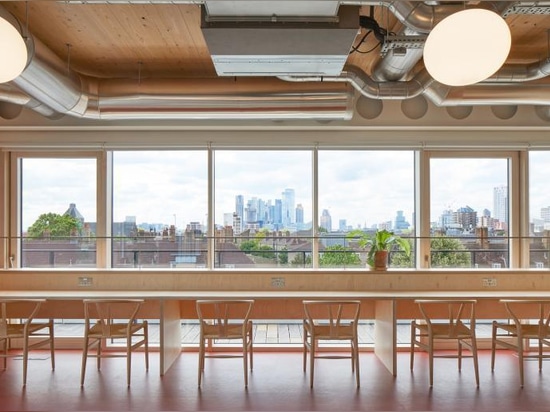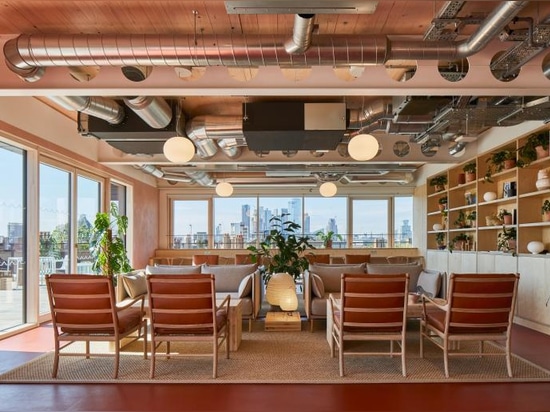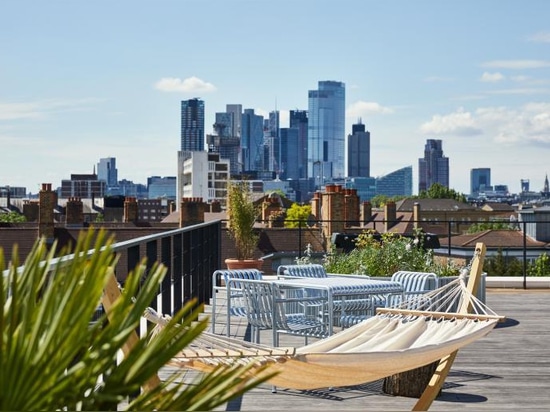
#COMMERCIAL ARCHITECTURE PROJECTS
Waugh Thistleton’s new London office champions wellbeing
6 Orsman Road, a new office building in east London by Waugh Thistleton, combines flexibility, sustainability and wellbeing in creating a modern workspace to stand the test of time
As restrictions worldwide are starting to lift and life appears to be moving towards relative normality, architects know that change is needed in order for daily activity to safely resume; and workspace is a key area to address in a post-pandemic world.
London based architecture firm Waugh Thistleton’s recently completed office project, designed at 6 Orsman Road in East London for Storey, developer British Land’s answer to flexible private workspace, is located on the banks of Regent’s Canal in Haggerston, a stone’s throw from the creative and tech hubs of Shoreditch and Old Street. Flexibility and sustainability in form and function were central to its entire concept, and it is what makes this project a relevant response to current needs.
‘6 Orsman Road represents a new way of building for the future, both because of its innovative design and adaptable layout,’ says founder and director Andrew Waugh. ‘Built using a CLT-steel hybrid structure the whole building can ultimately be demounted and repurposed. The light weight timber floor slab requires a minimum amount of internal columns and no internal support walls, meaning that the building is flexible in plan and section – the floor can be easily removed to create double height spaces and additional stair wells. Demountable partitions and localised M&E has been used throughout, meaning that office spaces can be reconfigured as companies needs evolve and change, particularly poignant under the current circumstances.’
Additionally, true to the architecture studio’s commitment to thoughtful and sustainable design, the building also uses environmentally friendly materials, putting the users’ and planet’s wellbeing at the forefront. The building’s structure is made of a cross-laminated timber (CLT) structure, in order to reduce the overall building’s carbon footprint, as opposed to using, for example, concrete or steel. Photovoltaic panels on the roof offer a renewable energy source, while the rest of the roof becomes a garden filled with edible plants, fruit trees, and even insect boxes.
The interior environment has been given just as much consideration. The architects have left the timber exposed wherever possible, wrapping workspace in natural materials, such as clay, marmoleum and air-purifying plants. This approach work better in terms of acoustics, as the project’s specialist engineers, acousticians Sandy Brown, confirm. It seems also that natural surfaces, such as wood, might work better in slowing down virus transmission.
‘When designing workspaces we feel, in addition to ensuring they are flexible, it is important to ensure that they promote a sense of wellbeing,’ Waugh continues. ‘At 6 Orsman Road natural materials, great daylight, natural ventilation and loads of plants everywhere come together to create a lovely working environment, that simultaneously boosts productivity. Everything from the exposed timber to the waterside setting, has been designed to help the people inside to feel calm, focused and inspired.’
INFORMATION
waughthistleton.com; storey.co.uk




